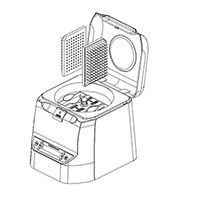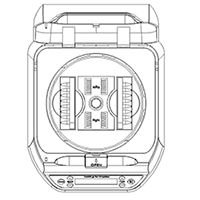A Step1: Power on, press the lid button(OPEN), open the lid.
Step 2: Put 2 pcs sealed micro plates vertically in a centrifugal tank through a slot in the top of the centrifuge unit. (note: If spinning only one plate, it is extremely important to load another plate of the same brand, style and sample volumes (water can be used) as a balance.If the load weight is not the same on both sides of the rotor, it will cause the device to run shaking, and will damage the device.)
Step 3:Check & make sure the micro plates are installed in the correct direction.
Step 4: Close the lid.
Step5: Set speed & time, press “start”.





